YESTERDAY was turning the compost pile day. If I did not mention it, lets do it now. I keep mine in one of those ugly common big orange plastic pots that hold a hundred/two hundred pounds, and most people use to plant big creatures. The pile is composed of shredded newspapers, dry/green leaves from the garden, some dog poop, hair, coffee grounds,
onion/garlic skins, recycled soil from other pots and sandy soil from the garden.
I noticed the color is turning dark brown, enough earth worms, and some minuscule insects that move pretty quick. The smell is not sour, meaning
a good balance of the parts. If your pile is too wet it will smell of sulphur or mangrove like. If it is to dry/hot, most living creatures will pass away.
For the last week or so I have noticed dreaded white flies on the Calliandra, Murraya and a DK vine. I had killed most with my secret concoction (antigonum's hot sauce and uncolored dish soup), yet every
morning I kept watching them flying away from my water spray.
I was getting irritated. Decided to monitor around the abandoned house to our right, and the house where the vampires live in our left. There they
were, the culprits, tens of them hanging in beautiful Tecoma stans. I gave them the bitter/hot medicine and moved up the street...What did I find
on the hated Ixoras? Hundreds of the same....I gave them what they deserved using the whole bottle between the two raids.
Moral of the story. Tecomas and Ixoras are prone to have this pest. If you have either one planted in the wrong situation, be ready to spend the rest
of your life in that silly activity, killing the enemy.
Most of the problems in the garden, with over 120 species, are always the same, the one mentioned, snails, brown beetles and two odd looking and
rare specimens mentioned in the past. Damage by biting, chewing is never, in my view, as bad as the sticky infestations of sap sucking ones.
If you do not catch the criminal in the act, the chewing/biting kind will
be invisible..The damage is not aesthetically nice, but still it does not bother me as much. It is no accident that in a wider scheme of things that could go wrong, mine are really a few and never chronic.
It is simple. When the gardener keeps different species around, it is difficult that insects/pests will jump to vegetation relatives. Example
there are some roses that keep some insects during a part of their life
cycle at home, when the time is right the insects move to the orchard,
to the apple trees and there goes, your apple pie, if you do not stop
them in a timely manner...The problem is solved planting resistant roses/apples.
Finally, I made some compost tea. Will not get into it. If you go
to the web and research, you will see why. At any rate, I gave of that nectar to roots, and foliage. Everybody happy as a clam. If that is possible. Later, I planted six seeds of Mirabilis siciliana, a nice small
plant with bright fragrant flowers.
The garden requires stamina and planning. Some activities can be postponed, insects....never...and that is that...Time to go.
miércoles, 17 de febrero de 2010
Suscribirse a:
Enviar comentarios (Atom)


















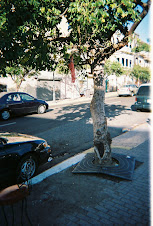-25.jpg)
-24.jpg)
























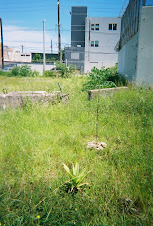




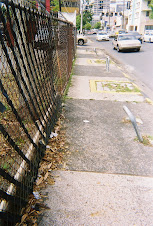
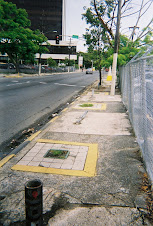
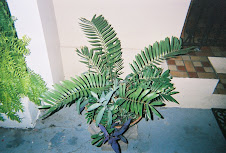




-22.jpg)
-25.jpg)
-24.jpg)






-16.jpg)
-13.jpg)
-08.jpg)
































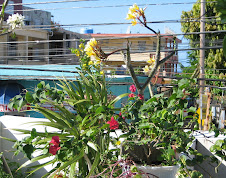
















6 comentarios:
One time, when dividing some new bromeliads I bought, discovered a huge infestation of scale! frantically tried to quickly divide the new from the old when I realized there were cockroaches spilling out from the rootball. Pests ARE priority #1! Scary day.
You are absolutely right! Insects are killers. They just invade and multiply fast. You must share your special concoction. I really need something handy to fight white alphid (those that creates sticky cotton stuffs on the plants) and mealy bugs. Some of those white alphids invaded my Gloxinia. There is nothing much I can do as glox leaves are very delicate.
Hey, another gardener.....and is that a Cercis silaquastrum in the main picture?
Beautiful pictures by the way!
Greetings to all, thanks for sharing your thoughts, inquiries..
The Rainforest Gardener,
Once the scales reach the armored cycle, there is not much one can do.
I confronted the problem just once, with an endemic Cycad, moons ago. It was indoors.... I wasted my time the first time with insecticide..The second I got rid of all the infected leaves. Informed the owner and left the plant outdoors.
Stephanie,
Sriracha Hot Chili Sauce, www.huyfong.com, is perhaps, the best
I have ever bought,used for my meals.
Or make your own with hot peppers/chile,garlic/onion in a blender. Mix with water and sift. Other wise your sprayer will get clogged.
I use a 32 ounce spray bottle, easy to handle. If it is too hot for you, think of it on the skin of insects.
I use one/two teaspoons of dish soup
and two/three of the hot sauce. You
will notice right away how effective
it is. To be honest, I do not feel
any joy killing cute insects, but I
have no choice. That is the secret. Trial and error will make
your OWN formula.
Gary,
That picture was taken in China Town, Manhattan, New York. The best place to eat if you ask me.
The three, very appropriate when one thinks of it, is a Cercis Chinnensis,
or Redbud.
Thanks for the visit!
Will do. Thanks Antigonum!
Have a pleasant evening :-D
That sounded awful. Pest are really annoying especially if they happen to be hideous too.
Publicar un comentario